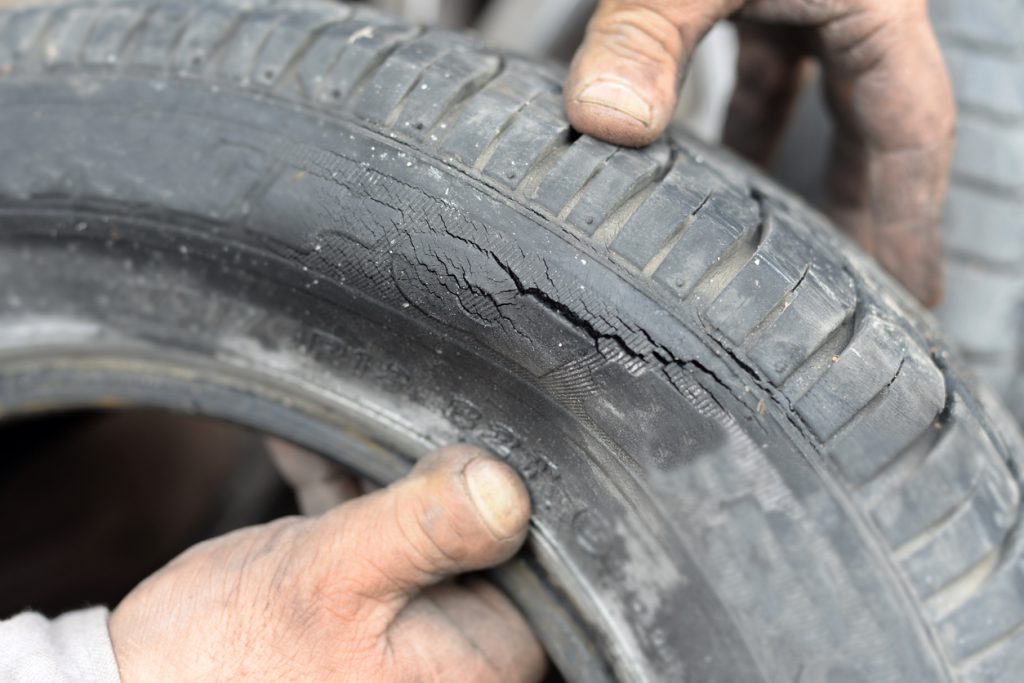
There can be significant dangers to safety posed by old tyres. Because of this, the government has banned tyres older than 10 years from heavier vehicles. But what aboutageing tyreson regular cars? Read on to find out.
Old tyres are allowed on cars
From February this year, tyres older than 10 years were banned from the front axles of lorries, coaches and buses. They were also axed from minibuses completely.
The government took action to ban old tyres following a coach crash on the A3 that killed three passengers in 2013. An inquest blamed the tragedy on a 19-and-a-half-year-old tyre blowing out.

Will old tyres be banned?
As far as we’re aware, there are currently no plans to ban car tyres older than 10 years from regular cars. However, if statistics show that the ban on older rubber for trucks has a positive impact on safety, there may well be a change of heart by the government.
Are older tyres dangerous?
It depends on their age, but by and large the older a tyre gets, the less safe it becomes. Tyres undergo a punishing life. Over time, this has an impact on their structure, making them more likely to fail. And age makes their rubber less pliable which affects their ability to stop quickly.
The Royal Society for the Prevention of Accidents (RoSPA) says: “Tyre manufacturers do not seem to have a consistent recommendation because the roadworthiness of a tyre depends on many factors, including the condition in which they are stored, the use to which they are put, road conditions, how well they are maintained and the driver’s driving style.”
Why do tyres deteriorate with age?
Rubber is actually made up of a cocktail of ingredients known as a compound. As this get older, these ingredients weaken and break down. This results in the material hardening. And as it becomes more brittle, it can crack.
Extreme temperatures cause tyres to expand and contract. This constant movement can weaken the structure, again resulting in cracks. The UV rays from sunshine can have the same effect. And it’s impossible for most people to keep their wheels out of the sun.
Tyre compounds include chemicals that are designed to prolong the tyre’s life. But to work effectively, the tyre needs to be rotating to distribute the anti-ageing chemicals. Older tyres won’t have done much mileage or their tread would have worn down. That means the anti-ageing chemicals won’t have been able to do their job. And while the tyres have been sitting still, the sun’s UV rays will probably have been doing their worst to them.
Do old tyres fail the MOT?
Just because a tyre is old doesn’t mean it will automatically fail the MOT test. However, if it has cracks in it, it will be deemed an MOT failure. This is because the cracks can be a symptom of other serious structural problems that might cause a dangerous blow out.

Can you tell how old your tyres are?
Every tyre has the date when it was made stamped on it. You just need to know where to look. First find the writing on the sidewall. You’re looking for an embossed panel, probably with the letters DOT in front of it. In the panel, you’ll see four numbers. The first two digits stand for the week of the year, the second two the year. So 0221 is the second week of January in 2021.
If you’re at all concerned about the state of your tyres,click on this linkto find a technician who’ll be able to advise you.
By John Price, a member of Green Flag’s team of automotive technical support engineers
